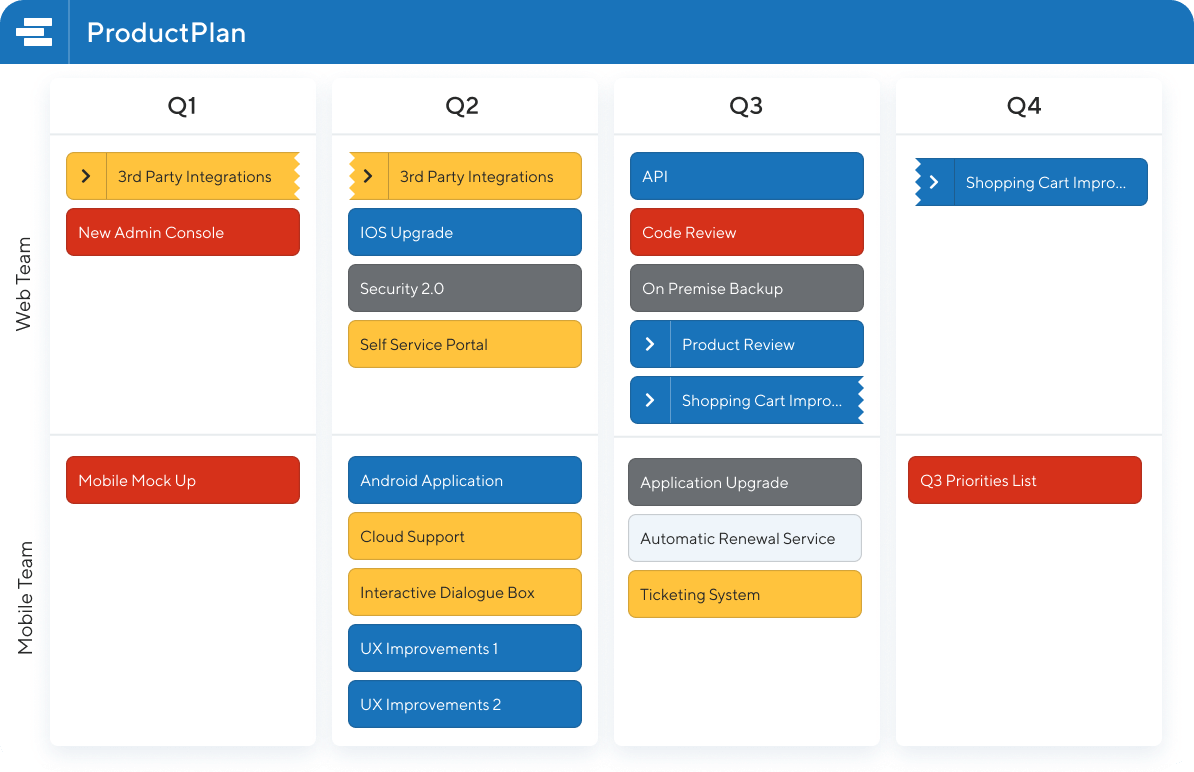Don’t overlook this step. It’s your job to not only create a great product but to make it a successful one.
Set the Stage for Product Launch Success
Decide how to unleash your product
At this point, product development is wrapping up their work. It’s time to think about unleashing this fantastic offering upon the world. Work with your marketing team to create a PR and go-to-market campaign. That includes establishing a prepared way to explain the product’s pricing structure.
Don’t overlook this step just because it falls outside of strategic product planning and product development. It’s your job to not only create a great product but to make it a successful one.
Heavily mine beta data.
Consider the public beta your “soft” launch. A “soft” launch is an opportunity to gather massive amounts of feedback. You can tweak as many things as you want without an official product launch’s constraints and responsibilities.
But remember, you never get a second chance at a first impression, and the beta is making first impressions. They’re the early adopters and influencers that could pour cold water on your release before it’s even out the door if things seem shaky.
Your beta-launch’s goal isn’t to offer up perfection; it’s to generate feedback and spot potential problems. Better to push out a beta that needs some adjustments than to delay it for so long that you won’t have enough time left to do much with the feedback you receive.
Make the most of your dress rehearsal so the final product reaches its full potential.
Implement effortless onboarding
In most cases, you won’t be personally shepherding each prospect through the discovery, trial, and purchase phases. You’ll need to put a scalable onboarding solution into place. The goal here is to move prospects as quickly as possible to that moment when they realize the value proposition is real, and the product is helping them do their job or live their lives better.
You can minimize setup time with pre-set defaults. But asking people to check a bunch of boxes and flip a bunch of switches before they’ve even started using the product is both off-putting and misguided. How will they know what they want until they’ve got some experience?
Instead, give them a robust and common starting point and then let them tweak it themselves after they’re more familiar with the product and see how it applies to their particular needs.
When a product has a steep learning curve, many new users will bail out before realizing any value. Acknowledging that users need a little education to be successful is essential.
Train the Trainers
Sometimes onboarding a user requires an internal team member’s personal touch. In those cases, your peers across the organization will need to be trained on the product. An efficient approach is to train your trainers. The trainers are your peers across the organization, such as a sales engineer, that can train others rather than relying solely on the product team. Making sure those people are ready before the product launch is key.
Training users
Training doesn’t necessarily mean a week-long class or a giant user manual. It can be as simple as short how-to videos for specific tasks or interactive webinar walkthroughs. Just make them easy to access and discover, with a mix of self-service and full-service options.
If your product is digital, you can build some onboarding capabilities directly into your product. Identify which behaviors are crucial to converting trialers into adopters. You can proactively nudge them toward those actions with helpful prompts in the user experience. Also, make sure there are implemented means for users to offer direct feedback about the product experience.
Whatever your research has indicated as key moments that generate customer delight, do everything possible to usher users there. On-screen pop-ups and highlights, helpful hints, and in-app walkthroughs are things you can do to decrease the time-to-value.
No matter how intuitive your product may be, people will still have questions about using it. Make it easy for them to overcome obstacles and complete tasks. Make sure support documentation has been developed, reviewed, and made easily accessible.
This documentation could include FAQs on your website, a help section built into your product itself, or a printed product owner’s manual (if you’re selling a physical product).
If things go great, you may soon find yourself overwhelmed with new users, all clamoring for help and guidance to make the most of your product. All the new users mean it’s time to create a strategy for scalability.
When the masses descend, a lone product manager can’t be onboarding and training hundreds or thousands of customers each week. Support will play a crucial role in training customers. It’s Customer Support’s time to shine.
Otherwise, turn to self-service or broadcast methods to get users up to speed. Save personalized support for strategic customers.
Nature vs. nurture
Once a user gets hooked on your product, your job isn’t done. You’ll need to prevent complacency from kicking in after that initial rush of success.
Craft a strategy for maintaining momentum, such as new assets, for the long-run. Once you’ve established an initial user community, continue to offer them additional tidbits to encourage usage and adoption. These can highlight other features glossed over at launch, provide more in-depth training or tutorials, and include case studies demonstrating how real customers realize the value in various ways from the product.
The communication strategy should leverage notifications, emails, and prompts. Ideally, base these on programmatic triggers keyed off user behaviors in the product (or a lack thereof).
